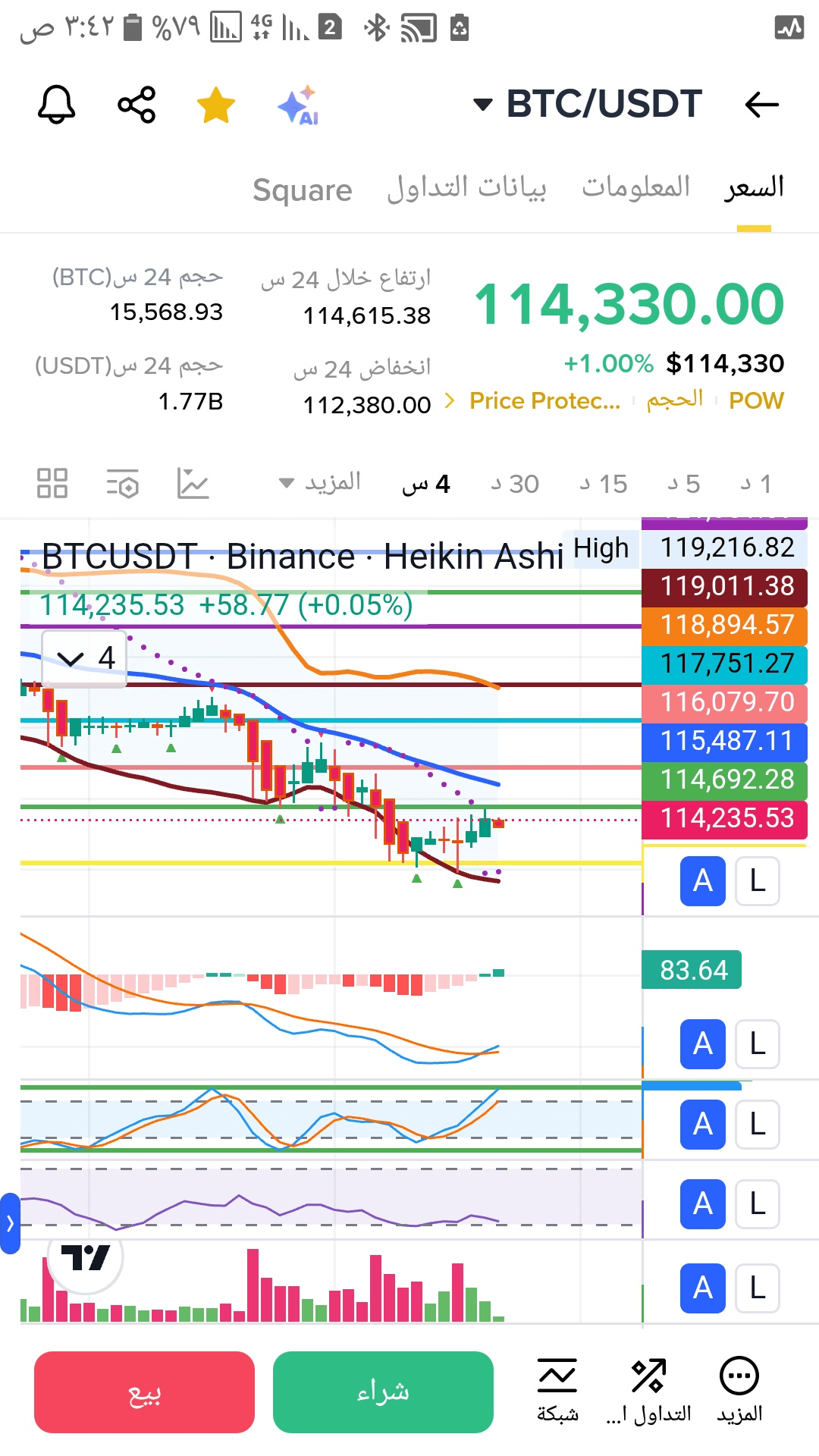If you are a beginner in the world of digital trading, understanding the basic terms is the first step towards making informed and confident investment decisions. Here are the key concepts you will need during your journey:
## 1. **Cryptocurrency**
It is a type of digital currency that uses encryption to secure transactions and is often built on blockchain technology. The most famous examples are **Bitcoin (BTC)** and **Ethereum (ETH)**.
## 2. **Trading Pair**
Refers to two currencies traded together, like **BTC/USDT**, where you buy or sell one currency for another. In this example, Bitcoin is measured in USDT (Tether), which is approximately equal to one US dollar.
## 3. **Current Price**
It is the price at which the currency is traded at the current moment. For example:
- Bitcoin price (BTC/USDT) at close: **114259.99 USDT**
- Ethereum price (ETH/USDT): **4324.88 USDT**
- Binance Coin price (BNB/USDT): **872.79 USDT**
## 4. **Buy and Sell**
- **Buy**: Acquiring a digital currency in exchange for a stable currency like USDT.
- **Sell**: Disposing of a digital currency in exchange for converting its value into a stable currency.
## 5. **Wallet**
A place to store digital currencies, which can be:
- **Hot Wallet**: Connected to the internet (like wallets within trading apps).
- **Cold Wallet**: Not connected to the internet (more secure, like hardware wallets).
## 6. **Blockchain**
A distributed digital ledger that records all transactions securely and transparently. Each "block" contains a set of transactions and is added to a "chain" of previous blocks.
## 7. **Volatility**
Refers to how quickly currency prices change. Cryptocurrencies are known for their high volatility, which means opportunities for profit but also risks.
## 8. **Trading Orders**
- **Market Order**: Immediate buying or selling at the current price.
- **Limit Order**: Setting a specific price to buy or sell in the future.
- **Stop-Loss**: An order used to reduce losses if the price falls to a certain level.
## 9. **Liquidity**
Refers to the ease of buying or selling a currency without significantly affecting its price. Pairs with high liquidity (like BTC/USDT) are more stable in trading.
## 10. **Leverage**
A tool that allows you to trade with a value greater than your actual balance. For example, 10x leverage means you are investing 10 times your capital. It is used in margin trading and requires extreme caution due to the amplification of gains and losses.
## 11. **Margin**
It is the amount you put up as collateral when using leverage. If the market moves against you, you may be required to add funds (margin call).
## 12. **Technical Analysis**
Studying price movements using charts and indicators (like moving averages and trading volume) to predict future trends.
## 13. **Trading Volume**
The total amount of currency traded over a period of time. High volume indicates strong interest from traders.
## 14. **Bull Market and Bear Market**
- **Bull Market**: When prices are in an upward trend.
- **Bear Market**: When prices are in a downward trend.
## 15. **Investment vs. Trading**
- **HODL**: Buying a coin and holding it for a long time.
- **Trading**: Frequent buying and selling to achieve short-term profits.
---
Once you master these terms, you will be better prepared to understand the market and interact with it confidently. You can start applying what you have learned directly through the platform, where integrated trading tools, an easy interface, and live data are available to help you make informed decisions.

😎👍❤
